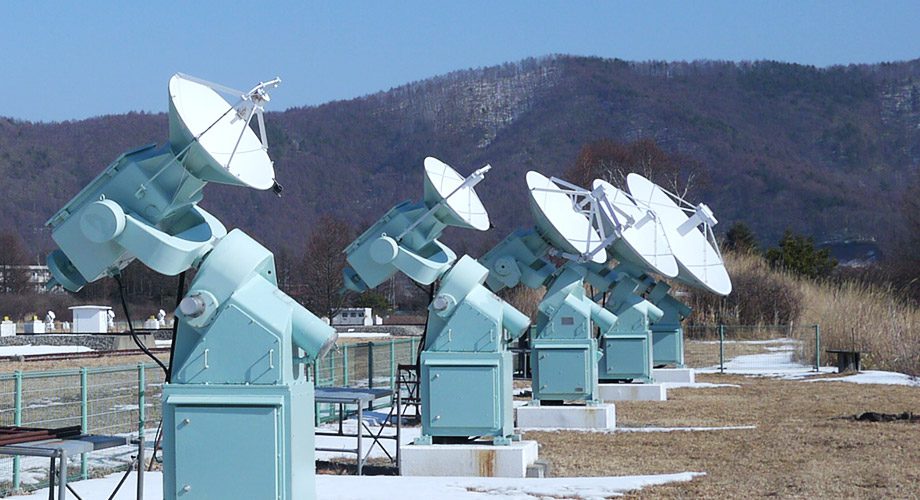Information of Telescopes
45m radio telescope
The 45-m telescope is one of the world's largest radio telescopes that observes in the millimeter (1mm-10mm) wavelengths. Using its large 45-m diameter aperture,the 45-m telescope is capable of collecting extremely weak signal from distant terrestrial objects. The back structure of the 45-m telescope adopts a method called "Homologous deformation method", which is a way to keep the surface of the telescope as close to a paraboloid as possible even when the surface deforms due to its own gravity. This allows astronomers to collect radio waves efficiently towards every direction of the sky.
| Antenna | beam waveguide antenna |
|---|---|
| Diameter of antenna | 45m |
| Surface accuracy | 0.1mm |
| Frequency | 5-116 GHz |
| Angular resolution | 0.004°(maximum) (corresponds to visual acuity ~4) |
| weight | 700 tons |
- (open new window)45-m telescope
Nobeyama Radio Polarimeters
Nobeyama Radio Polarimeters are observing the Sun with multiple frequencies in the microwave range. It is capable to obtain the total incoming flux and the circular-polarization degree. The systems of 1,2,3.75,and 9.4 GHz were moved from Nagoya University to Nobeyama in April 1994. The 3.75GHz observation has continued for more than 50 years. It is very important for investigating the long-term variation of the Sun.
| Antenna | 6 mounts / 8 parabolic antennas |
|---|---|
| Frequency | 1, 2, 3.75, 9.4, 17, 35, and 80GHz |
Nobeyama Millimeter Array
The Nobeyama Millimeter Array (NMA) is a telescope array that consists of six parabolic antennas. Its ability to produce high spatial resolution images is equivalent to a 600-m diameter parabola,and it has pictured details of numerous celestial objects. The antennas are transferred from one station to another using a specially designed transporter that runs on rails. Currently, science operation was completed.
| Diameter of antenna | 10m |
|---|---|
| Antenna | 6 |
| Frequency | 80-230 GHz |
| Maximum angular resolution | 0.0003° (corresponds to visual acuity ~60) |
| Weight | 35 tons |
- (open new window)Nobeyama Millimeter Array
Nobeyama Radioheliograph (Nagoya University)
Nobeyama Radioheliograph is a radio telescope dedicated to observe the Sun. It consists of 84 parabolic antennas each with 80 cm diameter, sitting on lines of 490m long in the east/west and of 220m long in the north/south. The first observation was in April,1992 and daily 8-hour observations have been done since June,1992. In 2015, The Solar-Terrestrial Environment Laboratory at Nagoya University assumed operation of the Radioheliograph.
| Diameter | 80cm |
|---|---|
| Number | 84 antennas |
| Frequency | 17 and 34GHz |




